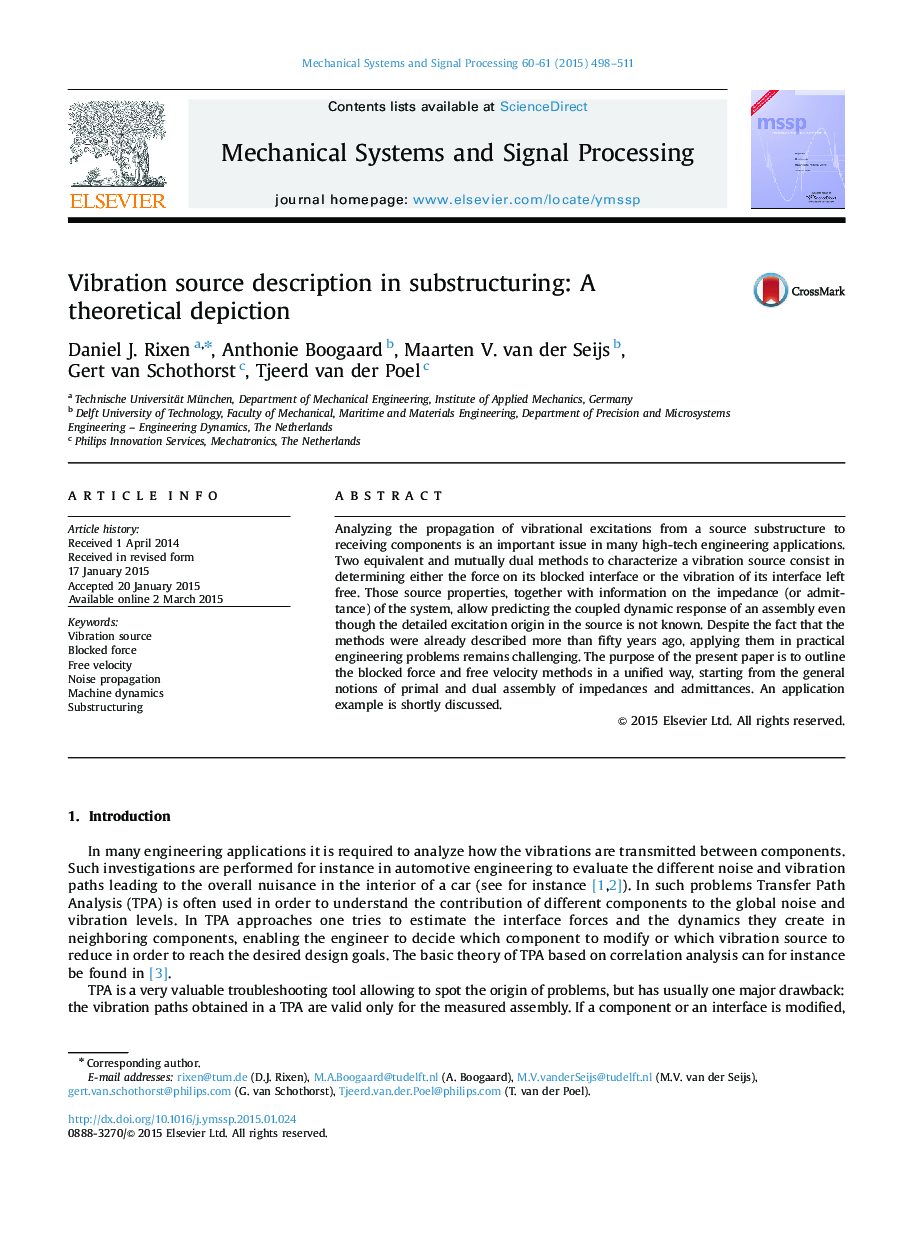| Article ID | Journal | Published Year | Pages | File Type |
|---|---|---|---|---|
| 559220 | Mechanical Systems and Signal Processing | 2015 | 14 Pages |
•In this paper the concepts of blocked forces and free interface displacements are described in the general context of substructuring.•Also those techniques are mainly applied in acoustics and only rarely in structural dynamics, probably due to historical reasons.•With this contribution we intend to propose a clear and complete theoretical description that will enable engineers to apply those concepts for different problems.•We also give some historical references in order to place the discussion in perspective and indicate relations to other fields where similar concepts are used.
Analyzing the propagation of vibrational excitations from a source substructure to receiving components is an important issue in many high-tech engineering applications. Two equivalent and mutually dual methods to characterize a vibration source consist in determining either the force on its blocked interface or the vibration of its interface left free. Those source properties, together with information on the impedance (or admittance) of the system, allow predicting the coupled dynamic response of an assembly even though the detailed excitation origin in the source is not known. Despite the fact that the methods were already described more than fifty years ago, applying them in practical engineering problems remains challenging. The purpose of the present paper is to outline the blocked force and free velocity methods in a unified way, starting from the general notions of primal and dual assembly of impedances and admittances. An application example is shortly discussed.
